August 19, 2024 · 11 min read
How to Define a Standing Committee: Governance Explained
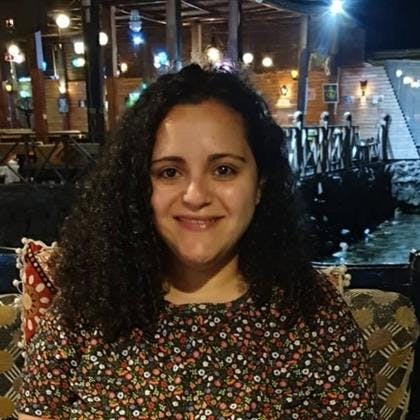
Shaimaa Badawi

When you set out to define a standing committee, it's essential to understand how these integral groups shape the direction and stability of an organization. A standing committee is more than just a recurring meeting; it's a powerhouse of ongoing governance, ensuring that strategic objectives are met, and critical decisions are made with precision. By understanding the role and impact of standing committees, you’ll see why they are the backbone of effective organizational management.
What is a standing and ad hoc committee?
Grasping the difference between standing and ad hoc committees is key to driving effective decisions and strategic success in any organization. Here are the distinct differences:
Standing committee
A standing committee is a permanent part of an organization’s governance structure. It is established to focus on specific areas, such as finance, governance, or programs, and it operates continuously over time.
Standing committees are tasked with ongoing responsibilities, including legislative review, policy recommendations, and oversight of specific functions within the organization. Their permanence allows for consistency, expertise, and stability in managing the organization’s affairs.
Ad hoc committee
An ad hoc committee, in contrast, is a temporary committee formed to address a specific issue or task. Once the particular issue is resolved or the task is completed, the ad hoc committee is typically dissolved.
These committees are often created to tackle urgent or specialized projects that do not require ongoing oversight. Their flexibility allows organizations to respond quickly to emerging needs without altering the permanent governance structure.
What is the role of the standing committee in an organization?
A standing committee is a cornerstone of organizational governance, tasked with ensuring continuous oversight, thorough legislative review, and effective policy implementation. Here's a list of duties and responsibilities assigned to a standing committee.
1. Evaluating and advising on legislative matters
The fundamental duty of a standing committee is to assess and provide insights on legislative proposals within an organization. The committee carefully reviews, debates, and examines the implications of proposed bills and amendments, ultimately offering guidance to the larger governing body.
2. Facilitating comprehensive bill discussions
Standing committees are entrusted with the oversight of discussions related to the formulation and modification of legislation, covering a range of topics such as public health, ethical standards, environmental protection, and security measures. They engage in detailed discussions, exploring all possible outcomes and impacts, before delivering their recommendations.
3. Conducting investigations and collecting evidence
When necessary, standing committees initiate inquiries to gather evidence on matters like budget allocations, member behavior, or adherence to committee rules.
They organize hearings to gather testimonies from various stakeholders and compile the evidence to present to the governing body for further deliberation.
4. Presenting analytical reports to the governing body
After thorough research and evaluation of proposed legislative changes, standing committees compile and present their findings to the governing body. These reports cover both the potential benefits and drawbacks, ensuring that decisions are made based on a well-rounded understanding of the issues at hand.
5. Determining legislative priorities
Standing committees also play a key role in prioritizing which legislative matters should be brought to a vote, based on the urgency and relevance to the organization's goals or community needs. For instance, they may prioritize public safety legislation if it addresses an immediate concern within the community.
6. Collaborating with other committees
To address complex or cross-functional issues, standing committees often work in conjunction with other committees, forming joint initiatives. This collaborative approach allows for a more holistic evaluation of issues, drawing on the expertise and resources of multiple groups.
7. Chair responsibilities
The chairperson of a standing committee is responsible for ensuring the committee operates smoothly and effectively. Key responsibilities include the following:
- organizing and leading committee meetings
- developing agendas for discussions
- producing and presenting an annual report summarizing the committee’s work
- carrying out additional tasks necessary to maintain the committee's effectiveness.
What is the benefit of standing committee?
Standing committees offer significant advantages to organizations, particularly in governance and decision-making processes.
- Continuity and stability: As permanent fixtures within the governance structure, standing committees ensure continuity in oversight and decision-making, even as board members or organizational leadership may change over time. This stability is crucial for maintaining consistent policies and strategies.
- Focused expertise: Each standing committee is dedicated to a specific area of the organization’s operations, such as finance, governance, or programs. This focus allows members to develop deep expertise in their respective areas, leading to more informed and effective decision-making.
- Efficient decision-making: Standing committees streamline the decision-making process by handling detailed discussions and analysis within their areas of responsibility. This allows the full board to focus on higher-level strategic decisions, relying on the committees' recommendations.
- Enhanced accountability: By delegating specific responsibilities to standing committees, organizations can enhance accountability. Each committee monitors and reports on its designated area, ensuring that critical functions like financial oversight or governance are managed with a high level of scrutiny.
- Strategic focus: Standing committees allow the board to maintain a strategic focus by delegating operational oversight to specialized groups. This ensures that board meetings can concentrate on long-term goals and major policy decisions, while committees handle the detailed work necessary to achieve those objectives.
- Improved board functioning: Regular self-assessments and ongoing education facilitated by standing committees, such as the governance committee, contribute to the overall effectiveness and professionalism of the board, helping to align members with the organization’s mission and goals.
What are the types of standing committees?
When managing an organization, it's vital for board members to understand the various standing committees that drive key decisions and ensure smooth operations. Let’s explore the different types of standing committees and how each one contributes to the organization’s success.
Executive committee
- This is a smaller group within the board, typically composed of key leaders like the board chair, vice chairs, secretary, and treasurer. The Executive Committee is empowered to make decisions and take action between full board meetings, especially when it’s not feasible to convene the entire board.
- This committee plays a crucial advisory role to the CEO and acts as a communication bridge between the CEO and the full board. They often handle the hiring, performance evaluation, and compensation of the CEO, reporting their activities back to the full board.
Audit committee
- Focused on ensuring the financial integrity of the organization, the Audit Committee oversees the selection of external auditors and reviews the audit report and management letter. This committee provides an independent assessment of the financial statements and ensures compliance with financial regulations.
- Members should possess strong financial literacy, and the committee's independence is maintained by excluding certain key individuals, like the board chair or CEO, from its membership.
Governance committee
- The governance committee is responsible for the overall functioning and structure of the board. This includes board recruitment, orientation of new members, conducting self-assessments, and ensuring adherence to bylaws and legal requirements.
- This committee also plays a key role in ongoing board education, helping members stay informed about the latest governance practices and legal obligations.
Finance committee
- Tasked with overseeing the organization’s financial health, the Finance Committee reviews financial statements, manages the budget, and ensures that the organization’s financial practices align with its long-term goals.
- This committee may also be responsible for overseeing investments, fundraising activities, and ensuring sufficient cash flow for operations.
Membership committee
- The membership committee focuses on managing the criteria for membership, credentialing members, and overseeing member-related activities such as elections. This committee plays a vital role in maintaining and growing the organization's membership base.
- It also works closely with the staff to develop programs that address the needs of the membership and may oversee annual meetings or conferences.
Program committee
- This committee is responsible for the long-range planning and general oversight of the organization’s programs. While the day-to-day activities are typically managed by staff, the Program Committee ensures that the programs align with the organization’s strategic goals.
- Depending on the scope of the organization’s activities, there may be multiple program-related committees, each focusing on different areas such as technology, education, or government relations.
Fundraising committee
- The Fundraising Committee is charged with generating the necessary financial resources for the organization’s operations. This often involves organizing events, campaigns, and other fundraising activities.
- While the committee handles the specifics, it typically engages the entire board in fundraising efforts, emphasizing the importance of collective contribution to the organization’s financial health.
What is a standing member of a committee?
A standing member of a committee refers to an individual who holds a permanent or long-term position within a standing committee. Unlike temporary or ad hoc members who may be appointed for specific tasks or short-term projects, a standing member typically has an ongoing role with continuous responsibilities related to the committee’s area of focus.
- Consistency in participation: Standing members consistently participate in the committee’s activities, bringing continuity and stability to the committee’s work. Their ongoing involvement helps maintain a consistent approach to the committee’s responsibilities.
- Expertise and insight: As permanent participants, standing members often develop specialized knowledge and expertise in the committee’s specific focus area. This expertise enables them to contribute valuable insights and informed decisions over time.
- Leadership and Accountability: Standing members, particularly those in leadership roles like the chair or vice-chair, are often responsible for guiding the committee’s direction, ensuring that it fulfills its mandate, and holding the committee accountable to its goals.
- Institutional Memory: With their long-term involvement, standing members serve as a repository of institutional memory, preserving the committee’s historical knowledge, past decisions, and established practices. This continuity is vital for informed decision-making and maintaining organizational integrity.
What is the difference between a standing committee and a steering committee?
Understanding the distinct roles of standing and steering committees is essential for ensuring effective governance and successful project execution within an organization. Here are three main differences between them:
1. Purpose and scope
- A standing committee is a permanent fixture within an organization's governance structure, focused on specific, ongoing areas such as finance, governance, or membership. These committees provide long-term oversight, ensuring that critical functions are consistently managed and aligned with the organization's goals.
- A steering committee, on the other hand, is typically formed to oversee and guide the direction of specific projects or initiatives. While they may exist for the duration of a project, their primary role is to ensure that the project aligns with the organization’s strategic objectives, stays on budget, and is completed on time.
2. Roles and responsibilities
- Standing committees are responsible for continuous oversight of their designated area, providing regular input and recommendations on policies, strategies, and operational issues. Their work is ongoing and they often play a key role in the decision-making process within the broader governance framework.
- Steering committees are more focused on managing and guiding specific projects or organizational activities. They collaborate with project managers to define goals, prioritize tasks, and mitigate risks. While they provide strategic direction, they do not handle the day-to-day work of the project but ensure that it progresses according to plan.
3. Composition
- Members of a standing committee are usually selected based on their expertise in a particular area, such as finance or governance, and they serve on the committee for an extended period, providing continuity and deep subject-matter expertise.
- A steering committee is often composed of a mix of board members, senior stakeholders, and experts relevant to the specific project or initiative. The composition is more fluid and tailored to the needs of the project, bringing together diverse perspectives to ensure comprehensive oversight.
Enhance Standing Committee Meetings with adam.ai
Standing committees play a crucial role in maintaining the stability and direction of an organization. With adam.ai, standing committee members can utilize an intelligent meeting management platform designed to streamline collaboration, documentation, and accountability.
Here’s how adam.ai can elevate your standing committee meetings:
- Agenda and content management: Effortlessly create agendas that align with your committee’s objectives. adam.ai’s smart note-taking and content collaboration tools ensure that every decision, discussion, and action item is documented and easily accessible to all committee members.

- Action tracking for accountability: Keep your initiatives on track with adam.ai’s action and decision tracking features. Set reminders, monitor progress, and track outcomes to ensure that the committee’s goals are achieved, and nothing is overlooked.

- Multi-space organization for varied projects: Organize your work by creating dedicated spaces for different projects, subcommittees, or specific tasks within the platform. This helps committee members manage multiple responsibilities and maintain alignment with the organization’s broader goals.
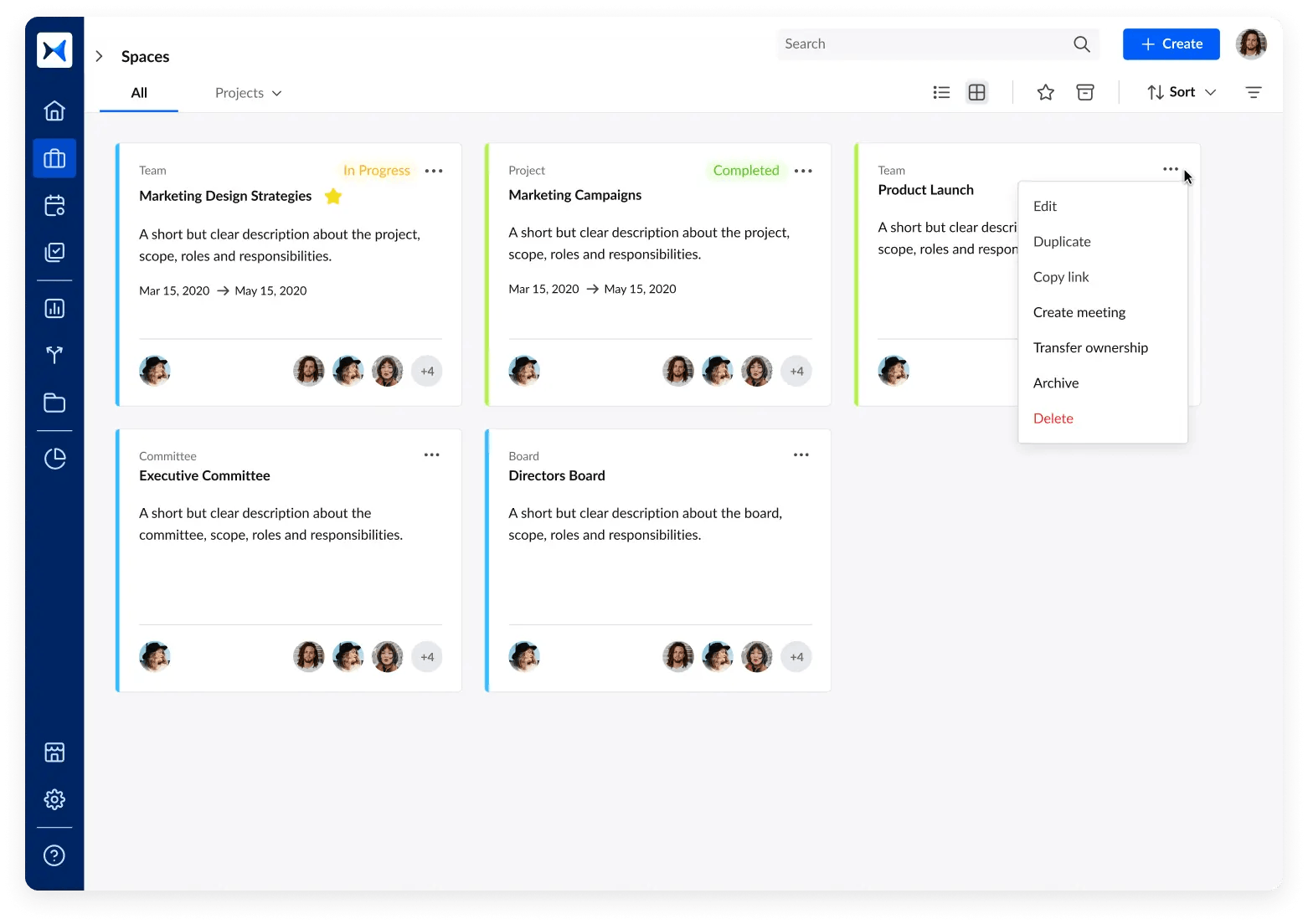
- Automated meeting minutes and documentation: Save time and boost efficiency by automating the creation and distribution of meeting minutes. adam.ai ensures that all discussions, decisions, and follow-ups are accurately recorded and easily shared, promoting transparency and engagement.
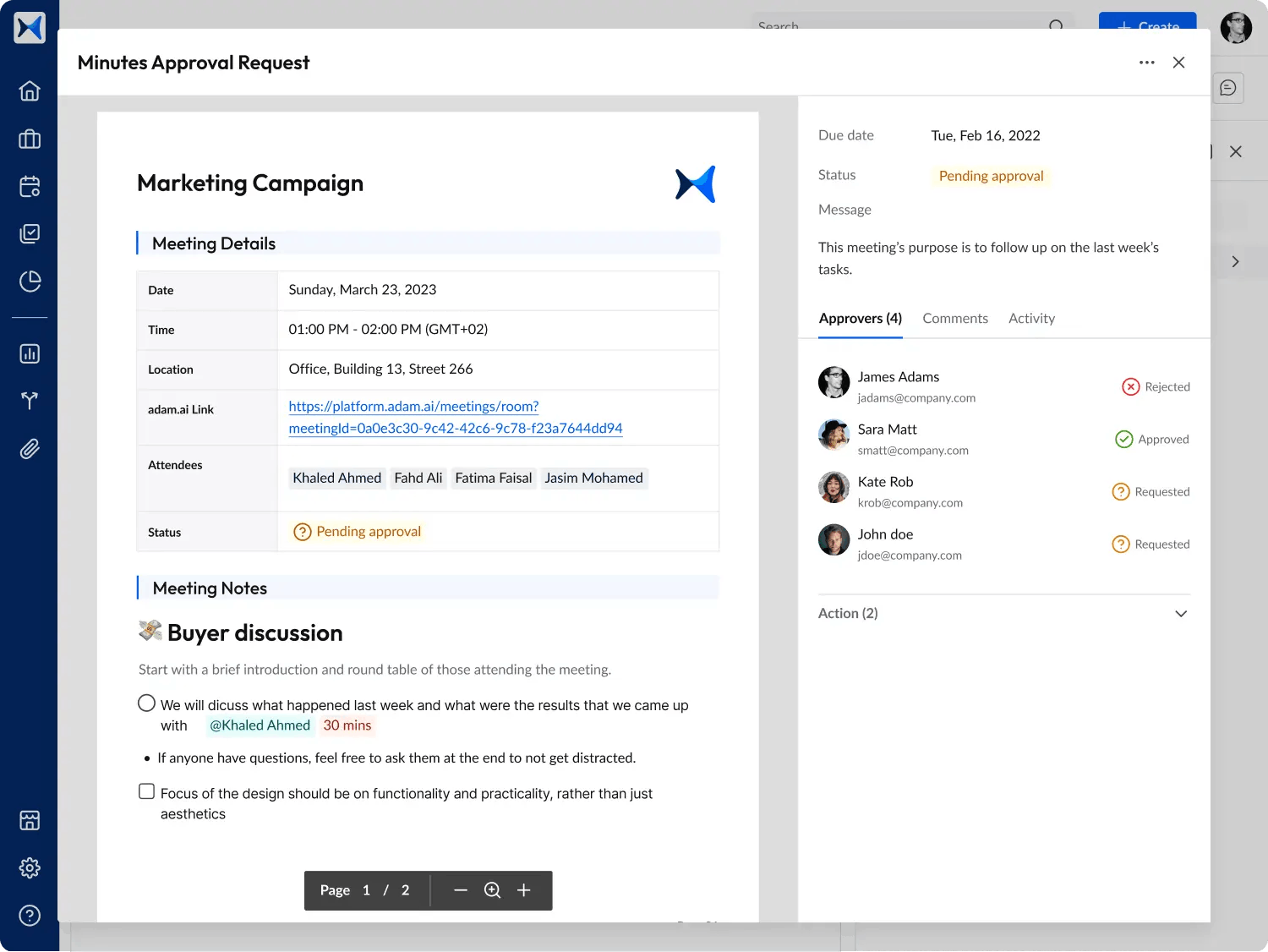
- Voting and decision management: Simplify the decision-making process by conducting polls within the platform, attaching relevant documents, and recording all decisions made during meetings. adam.ai keeps a clear record of every vote, ensuring fairness and transparency in your committee’s decisions.
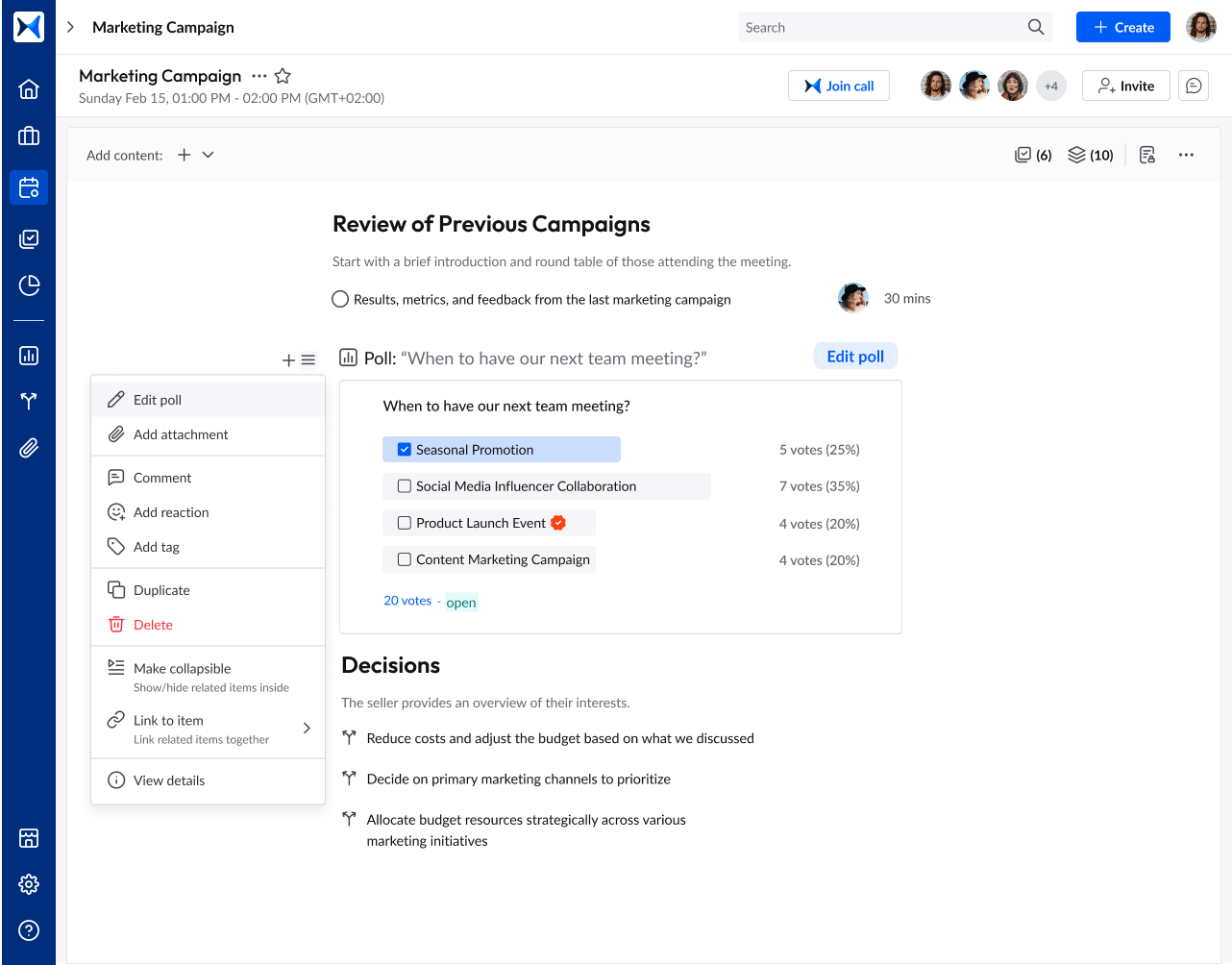
- Analytics dashboard for informed decisions: Use adam.ai’s analytics dashboard to track meeting participation, monitor action item progress, and evaluate the effectiveness of decisions. This feature supports data-driven decision-making, helping your standing committee consistently meet its goals and identify areas for improvement.
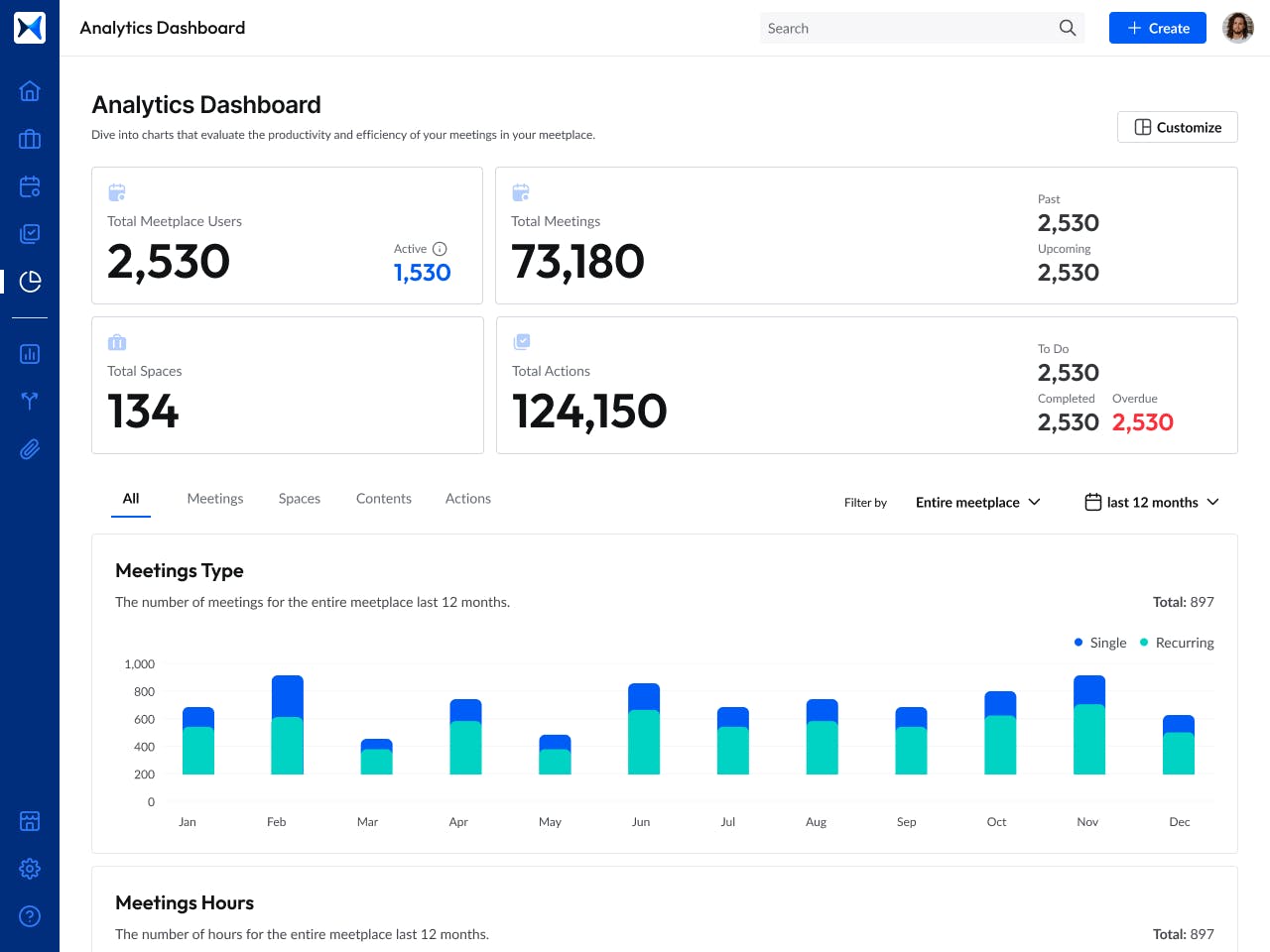
Transform how you conduct critical meetings—From meticulous preparation to effective execution and insightful follow-up, adam.ai integrates comprehensive analytics, full customization, and intuitive interfaces with powerful meeting management tools.
Easy onboarding. Enterprise-grade security. 24/7 dedicated support.
The bottom line
Defining a standing committee is key to recognizing its vital role in maintaining the steady course of an organization. These committees provide the structure, oversight, and continuity needed to ensure that critical functions are managed effectively over time.
By integrating modern tools into your standing committee’s workflow, you can further enhance the efficiency and impact of these essential groups, ensuring your organization’s success for years to come.
And while there may be multiple solutions available, here is why adam.ai is the meeting management software platform you can trust:
- adam.ai is one of Atlassian Ventures' portfolio companies.
- In the meeting management software category on G2, adam.ai has been ranked a leader and a high performer for successive quarters in the past years.
- adam.ai has been included in the Forrester Report in the AI-enabled meeting technology landscape.
- adam.ai is trusted and used by powerful teams and organizations worldwide for all types of critical meetings, like board, committee, project management, and business development meetings.
- And most importantly, adam.ai integrates with your existing workflow, is SOC2 compliant, provides dedicated support and success, and has a free trial option.
Subscribe to adam.ai blog
Stay ahead with the latest insights—get our newest blog posts, tips, and updates sent straight to your inbox.